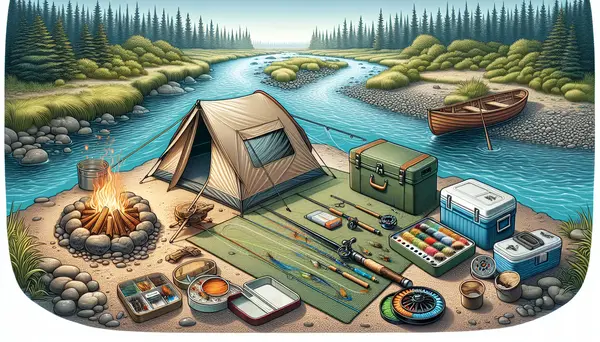Table of Contents:
Introduction to Fly Fishing
Welcome, budding anglers! If you're looking for a new hobby that combines the tranquility of nature with the thrill of mastering a skill, then fly fishing might just be your perfect match. This article will serve as an introduction to this fascinating sport and art form.
The Basics: What is Fly Fishing?
Fly fishing is a unique method of angling where you use an artificial 'fly' to catch fish. The fly is cast using a special rod and line designed specifically for this purpose. Unlike other forms of fishing, in fly fishing it's not the weight of the bait but rather the momentum from your line that carries your hook into the water.
Pros and Cons of Fly Fishing for Beginners
| Pros | Cons |
|---|---|
| Develops patience and concentration | Requires initial investment for equipment |
| Provides physical activity | May be difficult to learn without guidance |
| Opportunity to enjoy nature and outdoor experience | Dependant on weather and season |
| Builds a sense of accomplishment when catching a fish | Can be time-consuming to master |
| A relaxing hobby that can reduce stress | Requires commitment and regular practice |
The Gear You'll Need
To get started with fly fishing, there are some essential pieces of equipment you'll need:
- Fly Rod: Your primary tool for casting. They come in various lengths and weights suitable for different types of fish and waters.
- Fly Line: A specially weighted line used to deliver your fly onto or into the water.
- Fly Reel: Used to store your line when not in use and help control its length during casts.
- A Selection Of Flies: These mimic insects or small aquatic creatures which attract fish. There are countless varieties available depending on what type of fish you’re targeting.
Casting Techniques For Beginners
In order to successfully land flies where they need to go, learning proper casting techniques is crucial. Here are two basic methods beginners should start practicing first:
- The Overhead Cast : This is the most basic and commonly used technique in fly fishing. It involves casting your line back and forth over your head until you've built up enough momentum to send it out onto the water.
- The Roll Cast : Ideal for when there's limited space behind you, this method requires less room as it keeps the line mostly in front of you during the cast.
Fly Fishing Etiquette
Beyond mastering techniques and understanding gear, being a good angler also means respecting nature and other fishermen. Here are some key points of etiquette:
- Clean Up After Yourself: Always take any litter with you when leaving a fishing spot.
- Respect Wildlife: Remember that we share these spaces with many creatures who call them home.
- Avoid Crowding Other Anglers: Give others plenty of space on both sides if possible; don't encroach upon their area unless invited.
In Conclusion: The Joy Of Fly Fishing
To sum up, fly fishing is an art form that combines skill, patience, respect for nature, and love for outdoor adventure. As beginners start exploring this wonderful sport they will discover not only new skills but also develop a deeper appreciation for our natural world. So grab your rod, tie on a fly - let’s go fish!
Fundamentals of Fly Fishing: A Beginner's Guide
What is fly fishing?
Fly fishing is a type of fishing that utilizes a lightweight lure—known as an artificial fly—to catch fish. The fly is cast using a fly rod, reel, and specialized weighted line.
How is fly fishing different from regular fishing?
The major difference between fly fishing and regular fishing lies in the technique of casting. In fly fishing, the line carries the hook through the air, whereas in regular fishing, the hook is carried by the weight of the lure or sinker at the end of the line.
What equipment is needed for fly fishing?
The basic gear needed for fly fishing includes a fly rod, fly reel, fly line, leaders, and flies. Additional accessories like fishing vest, waders, and polarized sunglasses can also enhance the overall experience.
Is fly fishing difficult to learn?
While fly fishing can seem complex due to the various casting techniques and precision required, it is not inherently difficult to learn. With practice, beginners can quickly master the basics and enjoy this unique form of fishing.
Does fly fishing require a special kind of bait?
Yes, fly fishing requires the use of artificial flies as bait. These can range from simple imitations of insects to complex crafted representations of small fish, crabs, or other prey.







